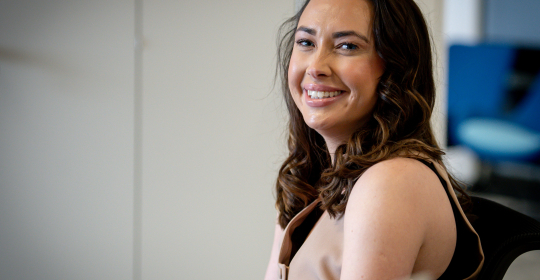- 73% of women felt employment stress in the last month, compared to 57% of men
- LinkedIn data also shows hiring of women in the UK fell again in November
New data from LinkedIn, the world’s largest professional network, has revealed that women in the UK are disproportionately more stressed by their work situation than men - underscoring the damaging impact the pandemic is having on women’s careers.
The latest findings from LinkedIn’s Workforce Confidence Index, which measures current sentiments about the UK labour market, found that women are experiencing more work-related stress compared to men. 73% of women reported they suffered employment stress in the last month, compared to 57% of men.
The data points towards a series of factors behind this gender disparity in stress levels. Compared to men, in 2020 women spent more time than in 2019 searching for their next job or project opportunity (45% of women versus 33% of men), checking in on work during off-hours or time off (37% of women, 29% of men), and working at their primary job (34% of women, 26% of men).
Despite this extra time spent on employment-related activities, women are also taking less time than away from their jobs. 55% of women said they spent less time taking holiday or time off in 2020, compared to 46% of men.
This latest data helps paint a fuller picture of how COVID-19 has exacerbated existing gender inequalities in the UK. New, additional data from LinkedIn shows that in November the hiring rate for women declined in the UK for the second month running. Earlier this month, real-time data from LinkedIn’s 29 million UK members revealed that women over the age of 30, many of whom are working mums or primary care givers, are being hardest hit, with the hiring rate for this group sinking to its lowest point in the Spring during the first lockdown.
Emily Spaven, UK Editor at LinkedIn, said: “The pandemic is taking a particularly heavy toll on women and their careers. We’ve already seen that women have been more likely to lose their jobs in this recession, which is even more worrying when LinkedIn’s data shows that women have also been less likely to start a new job during the pandemic. Our latest data shows women are spending more time than men working out of hours or searching for new roles - often while juggling work with increased family responsibilities. If we’re going to create a fair recovery, we have to recognise the impact the pandemic is having on individuals and offering greater flexibility to women and working parents who are balancing ever-more demanding workloads.”
To help people who are looking for their next opportunity, Microsoft and LinkedIn are offering nearly 1,000 free hours of learning courses at opportunity.linkedin.com. These free courses are available to help people learn the skills that are mapped to jobs that are in-demand by employers today. LinkedIn has also created a number of new features to help people facing unemployment. Members can use the #OpenToWork profile photo frame to signal to employers that they are looking for new opportunities. More than 3 million people around the world have downloaded the feature to date, and on average these members receive 40% more messages from recruiters and are 20% more likely to receive messages from the broader LinkedIn community.






